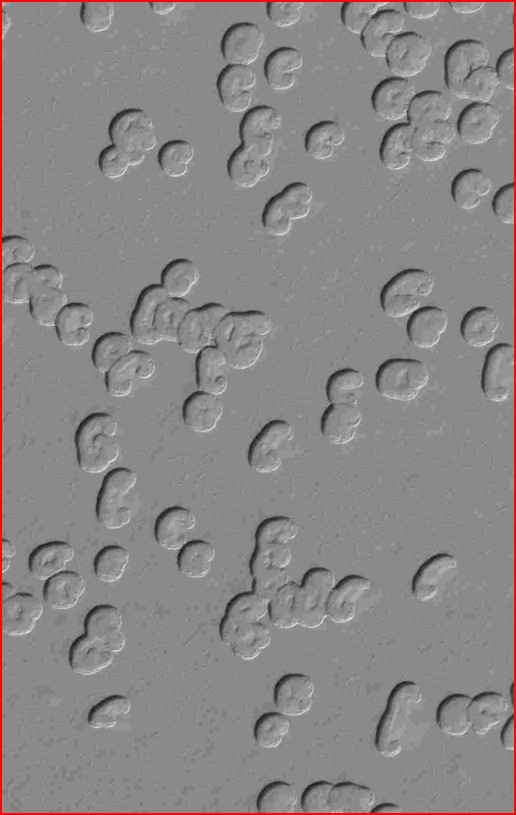
home •
about •
essential guide •
picture of the day •
thunderblogs •
news •
multimedia •
predictions •
products •
get involved •
contact

Credit: NASA/JPL/Malin Space Science Systems
pic of the day
archive
subject index
abstract
archive
Links:
Society for
Interdisciplinary
Studies
Aug 29, 2005
Curly Trenches in Mars’ Ice Cap
Electrical arcs traveling in geometric arcs have left nearly circular scars at Mars’ South Pole.
It’s summer at Mars’ South Pole, and the ice cap—made of frozen carbon dioxide—is sublimating in the sun. And the residual surface is showing the scars left by earlier encounters with planetary-scale electrical arcs.
Previously, we described another area scarred by moving arcs that eroded steep-sided and flat-bottomed trenches in the ice. Here, the arcs moved only a little. They curled at the beginning and at the end. The shorter movements, perhaps rotating in an external magnetic field, produced kidney-bean shaped trenches.
Most of the trenches have a terrace inside. After cutting the larger trench down to the level of the terrace, the arc pinched down to a smaller size. It also rotated unevenly, or perhaps there was an oscillation in the current: the terrace walls are scalloped. In many places transient surges in the current have left slightly deeper circular scars in the floors.
Numerous trenches show that the arc traveled in an almost complete circle: The small indentation in the lower right “corner” of each trench indicates where the arc failed to return to its starting point. Perhaps the axis around which the arc was rotating moved along the surface only a tiny bit: If the longer trenches were to have their linear segments removed, they too would appear in the shape of kidney beans.
Where trenches overlap, the intersections are clean—another mark of electrical discharge machining. The electrical forces that cut the surface are powerful enough to remove most or all the debris, either vaporizing it or carrying it into space. The “islands” of original surface make the almost-circular trenches look like craters with central peaks. In the electrical view, the two conditions are practically the same: Craters with central peaks are formed by two or more cutting arcs rotating around the axis of a larger vortex. These islands were formed by possibly only one arc rotating in a larger magnetic field.
EXECUTIVE EDITORS:
David Talbott, Wallace Thornhill
MANAGING EDITOR:
Mel Acheson
CONTRIBUTING EDITORS: Michael Armstrong, Dwardu Cardona, Ev Cochrane,
C.J. Ransom, Don Scott, Rens van der Sluijs, Ian Tresman
WEBMASTER: Michael Armstrong
Copyright 2005: thunderbolts.info